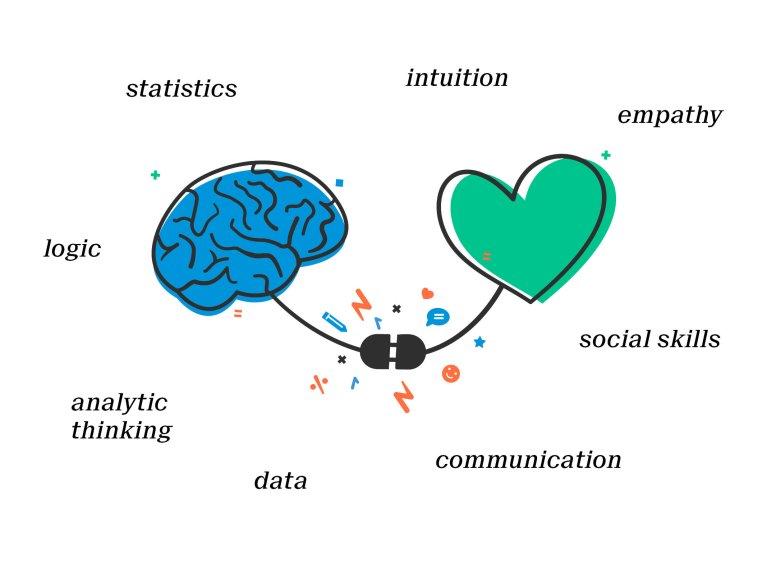April 04, 2024
UX research: analytical thinking meets intuition
by Nina Borrusch
The user experience of a digital product is crucial to its success. Am I encountering a system that I understand? A content that enriches me? An aesthetic that appeals to me?
We all have a different state of mind
We act out of a variety of motives. We have individual perceptions and expectations. Determining the essence of a target group’s needs requires analytical thinking and, at the same time, a keen sense of the behavior of the people behind it. Combining this is the art of UX research.
Good research makes the difference
As a digital agency, we successfully finished projects of the most diverse size and complexity. We address people of all ages nationally and internationally. The content we convey ranges from instructions for using medical equipment to educating regional media about fake news. Only an in-depth analysis of the respective situation enables us to understand and address our target groups correctly. And thus create the basis for a successful project.
In reality, however, it is far too often the case that customers believe they know what their end users want. That the designers at Apple or Uber have long since found the best practices, which are then poured straight into wireframes. Even if the perspective of individual users is part of the analysis, they are not usually the focus. Thus, the product development misses the actual needs of the target group. And the company’s goals and KPIs are given too much weight.
But this is precisely the time to gain reliable facts and real insights into the target groups. Because these insights influence the further work of all trades — from user experience and interface design to development and content creation. But how do you turn data, interviews and observations into such insights?
In UX research, statistical data is collected and analyzed, and users are interviewed or observed. Insights are derived from the results and shared with the team and our customers in an appealing and understandable way. The insights gained must be accepted by the entire team so that they can contribute to efficient product development as the most important source of knowledge about the users and their goals.
At the end of the day, we as designers create user experiences. Therefore, we should also work user-centered, putting people at the center of development.
What does a good UX researcher stand for?
The aim of the research work is to obtain feedback from the users in order to take it into account in the further course of the project. The selection of the appropriate method is the supreme discipline and requires a lot of experience.
Do I want to identify problems or validate my ideas? Will I gain more insight from collecting quantitative data in a large-scale survey or will qualitative interviews of my focus group help me more quickly? In addition to selecting the right research method and the analytical skills needed to evaluate the data, empathy is also essential. Because the strengths and weaknesses of a user experience must not only be seen, but also correctly interpreted.

UX research therefore means putting yourself in the shoes of the users and linking your own goals with theirs. Analyzing statistical data and communicating with people. These are not only the users of the product. They are also our own team, project partners, our customers and other business stakeholders. This combination of logical thinking and intuitive action, analytical skills and empathetic exchange is what makes this discipline so special.
In the fast lane from the start
Intensive usage analysis has a major impact on the successful outcome of a project right from the start. Therefore, UX research should be an integral part of every digital product development. It enables the team to specifically address the needs and expectations of the user community right from the start of the project. And thus ultimately contribute to a good user experience.
Your career as a UX researcher
If you recognize yourself here, work both intuitively and scientifically, and feel like convincing your team and our customers of your insights, then we’d love to get to know you!
We are always looking for talent, locally in Hamburg or remotely, to help us create the best possible experiences for our target groups.
